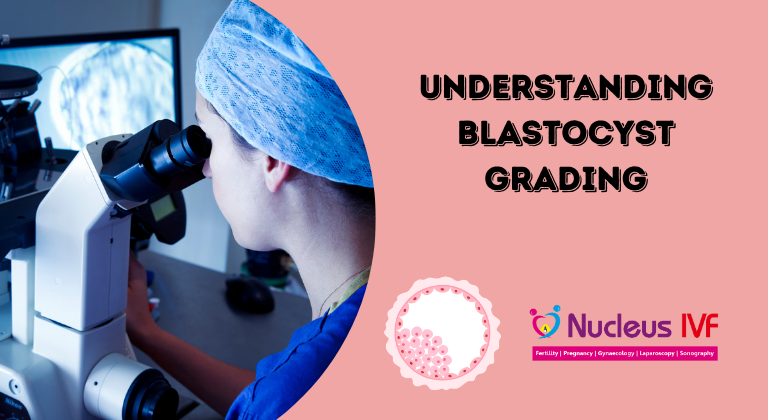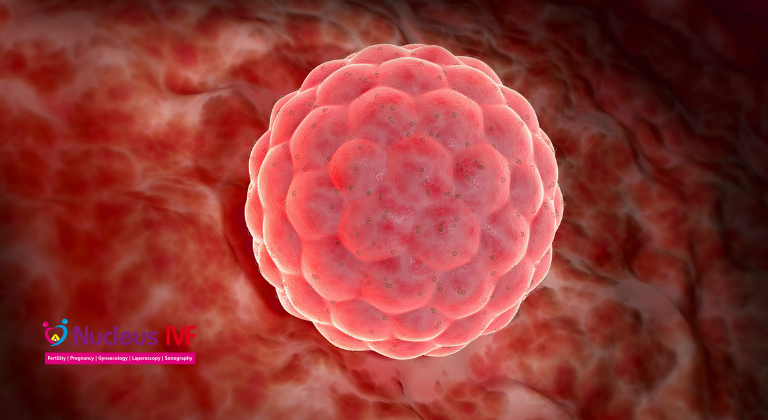If you’re undergoing IVF treatment, you may have heard the term “blastocyst grading” from your fertility specialist. While it might sound technical, understanding what this grading means is key to knowing how embryos are selected for transfer and how that affects your chances of success.

At Nucleus IVF Wakad Pune, under the guidance of Dr. Pritam Sulakhe, we ensure patients are empowered with knowledge throughout their IVF journey. This blog breaks down the concept of blastocyst grading in a simple and patient-friendly way.
What Is a Blastocyst?
A blastocyst is an embryo that has developed for 5 to 6 days after fertilization. At this stage, the embryo has:
A fluid-filled cavity
An inner cell mass (which becomes the baby)
An outer layer called trophectoderm (which forms the placenta)
Not all embryos reach this stage, so reaching the blastocyst phase is a good sign of embryo strength and development.
Why Is Blastocyst Grading Important?
Grading helps embryologists evaluate the quality and implantation potential of the blastocyst. The grade helps doctors decide:
Which embryos to transfer
How many embryos to freeze
Which embryos may require genetic testing (PGT)
Better grades don’t guarantee pregnancy, but they do indicate higher developmental competence.
How Is a Blastocyst Graded?
Blastocyst grading is based on three key factors:
1. Expansion (Stage of Development)
Graded on a scale from 1 to 6:
1–3: Early stage blastocysts (less mature)
4–6: Fully expanded and hatched blastocysts (more mature)
2. Inner Cell Mass (ICM) – Becomes the baby
Graded A to C:
A: Many tightly packed cells
B: Loosely grouped cells
C: Few or irregularly shaped cells
3. Trophectoderm (TE) – Becomes the placenta
Graded A to C:
A: Many uniform cells forming a cohesive layer
B: Some irregularity or fewer cells
C: Sparse or uneven cells
So, a blastocyst grade might look like: 4AA, 5AB, or 3BC
Example: 5AA is a highly expanded, high-quality embryo. 3BC is a moderately expanded, lower-grade embryo.

Does a Higher Grade Guarantee Success?
Not always. While better grades mean better morphology and development, factors like uterine health, age, and hormone balance also play critical roles.
Even a lower-grade embryo can implant and lead to a healthy pregnancy — and that’s why embryo grading is used as a guide, not a promise.
What Happens After Grading?
At Nucleus IVF Pune, after grading:
Embryos may be selected for fresh transfer or frozen (FET)
Couples may opt for PGT-A (genetic testing) to increase implantation success
Embryos are monitored for signs of continued healthy development
What If My Embryo Grade Is Low?
Don’t panic. Embryos that are graded B or even C can still result in a successful pregnancy. Your fertility team may recommend:
Waiting another day for further development
Transferring more than one embryo
Using assisted hatching or genetic screening
“At Nucleus IVF, our focus is not just on embryo grades, but on personalized treatment strategies that give each couple the best chance.” – Dr. Pritam Sulakhe
Why Choose Nucleus IVF Wakad for Embryo Transfer?
High-quality IVF lab with real-time blastocyst monitoring
Skilled embryology team and modern culture systems
Transparent embryo selection and patient involvement
Trusted care in Wakad, easily accessible from Baner, Pimple Saudagar, Aundh, Hinjewadi
Final Words
Understanding blastocyst grading can give you clarity and peace of mind during IVF. It’s not just about numbers and letters — it’s about giving your embryos the best possible chance.
At Nucleus IVF Pune, we guide you every step of the way with compassion, knowledge, and cutting-edge care.
📞 Book your consultation today at Nucleus IVF Wakad and let our team help you decode your IVF journey.
Dr. Pritam Prakash Sulakhe
Dr. Pritam Prakash Sulakhe
author
Dr. Pritam Prakash Sulakhe has completed his MBBS from B J Government Medical College , Pune which is one of the top medical College in India. He continued his post-graduation as DGO at same institute. After that he opted for Diplomat Of national Board In Obstetrics and Gynecology from Kerala Institute Of Medical Sciences Trivandrum, which is one of the most prestigious institute from South India.

